Abstract
OBJECTIVE: To determine the effectiveness of a drug utilization review (DUR) letter intervention sent only to physicians, sent only to pharmacists, or sent to both physicians and pharmacists in changing physician prescribing behavior for dipyridamole. DATA SOURCES/STUDY SETTING: A Wisconsin Medicaid prescription drug database for data from March 1991 through May 1992 related to both long-term care and ambulatory patient settings. STUDY DESIGN: The effects of a DUR letter intervention were tested using a field study, pre-post, nonequivalent control group, quasi-experimental design. The effects of the letter intervention in terms of dipyridamole expenditures (dollars reimbursed to pharmacies by Medicaid), expenditures for related drugs (aspirin, ticlopidine, sulfinpyrazone) and numbers of patients for whom dipyridamole was discontinued were examined across three experimental groups and a control group. DATA COLLECTION/EXTRACTION METHODS: Dipyridamole expenditures for each study patient during a six-month preintervention and six-month postintervention period were collected from Medicaid prescription drug claims. Patients who had zero dipyridamole expenditures throughout the six-month postintervention period were classified as having had dipyridamole discontinued. PRINCIPAL FINDINGS: Letters sent to both physicians and pharmacists resulted in a greater percentage of patients discontinuing dipyridamole relative to controls and statistically significant differences in postintervention dipyridamole expenditures relative to controls in both the long-term care and ambulatory patient populations. CONCLUSIONS: Interventions that focus on another person in the drug use process in addition to the physician may have greater effects on a change in the prescribing of a targeted drug than letters to physicians alone.
Full text
PDF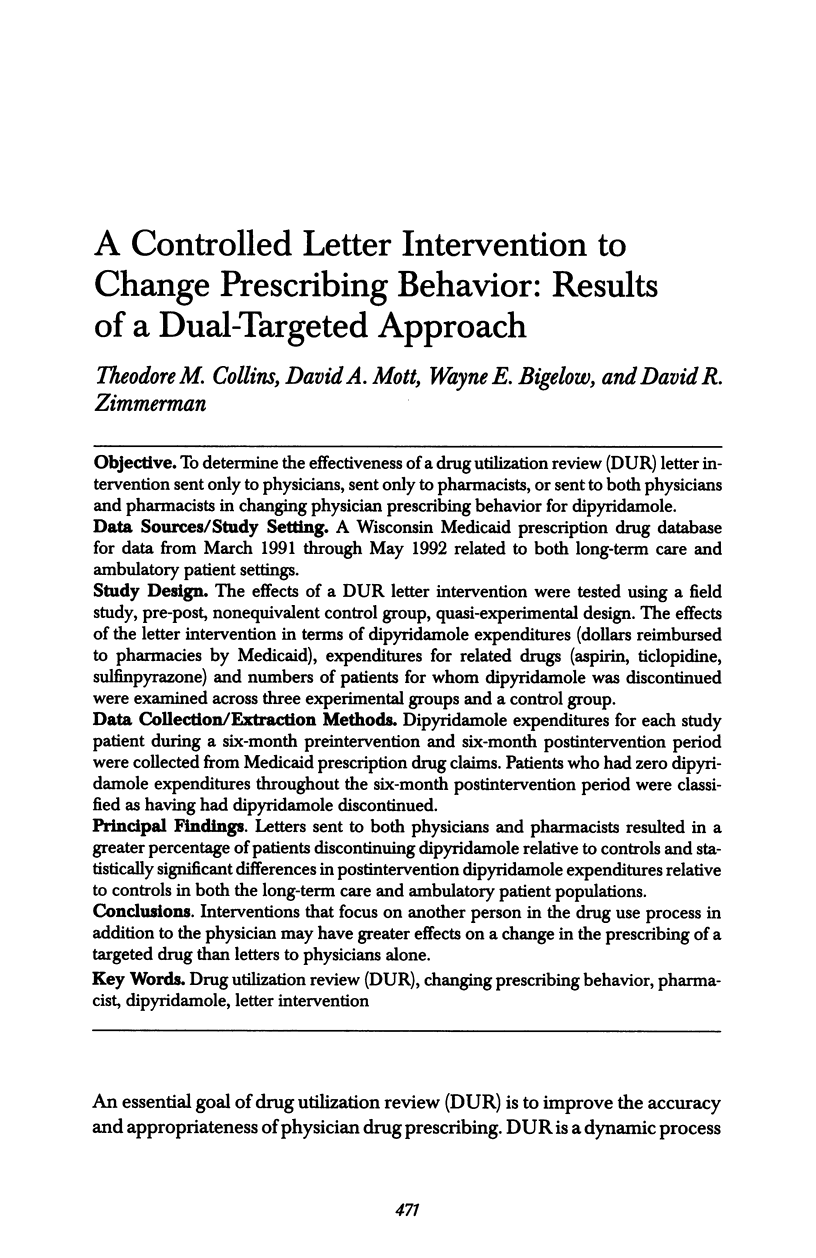
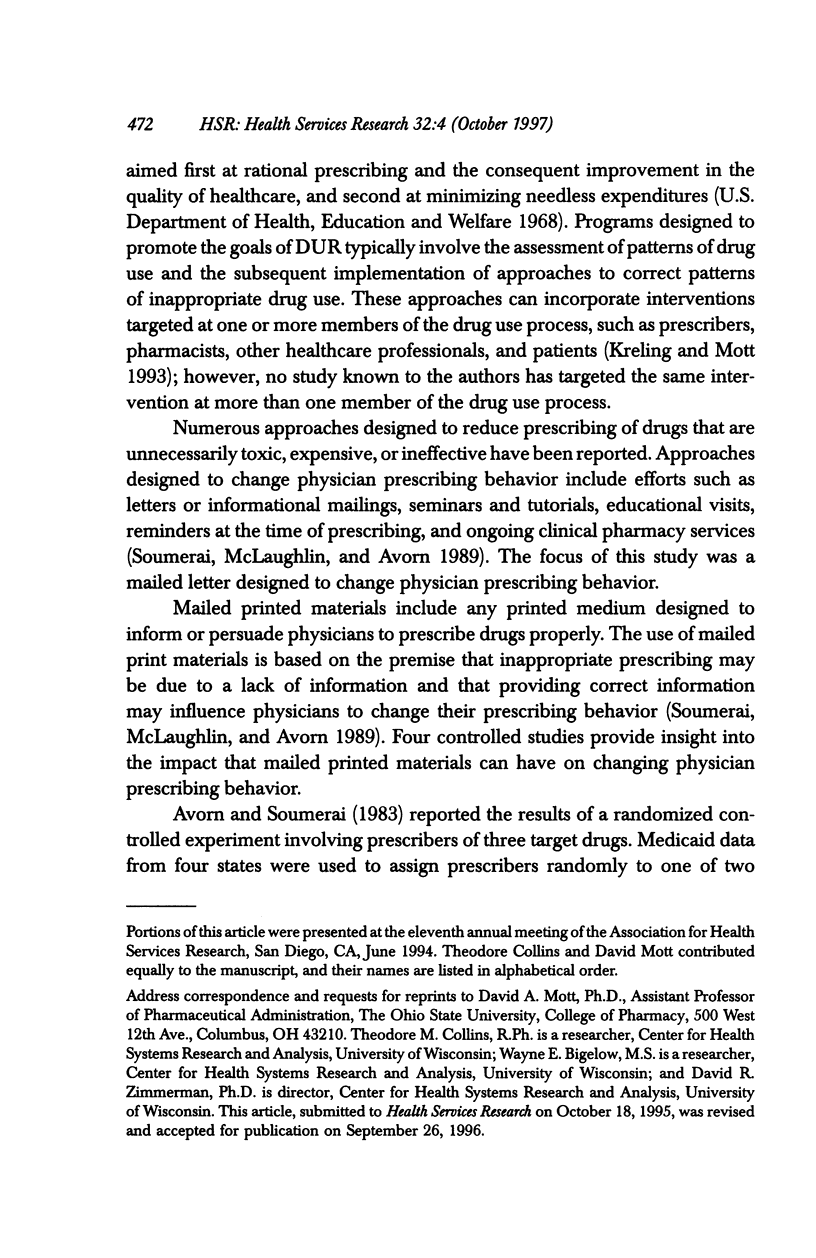
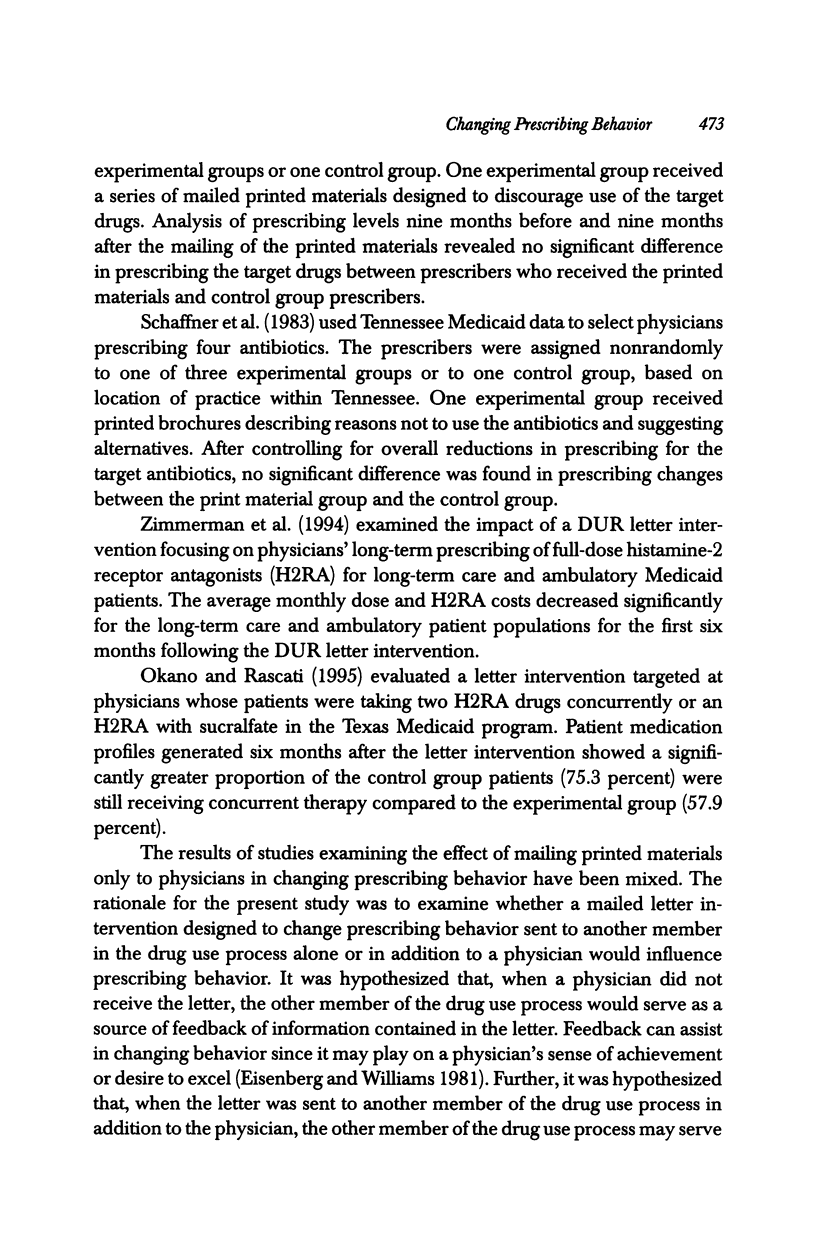
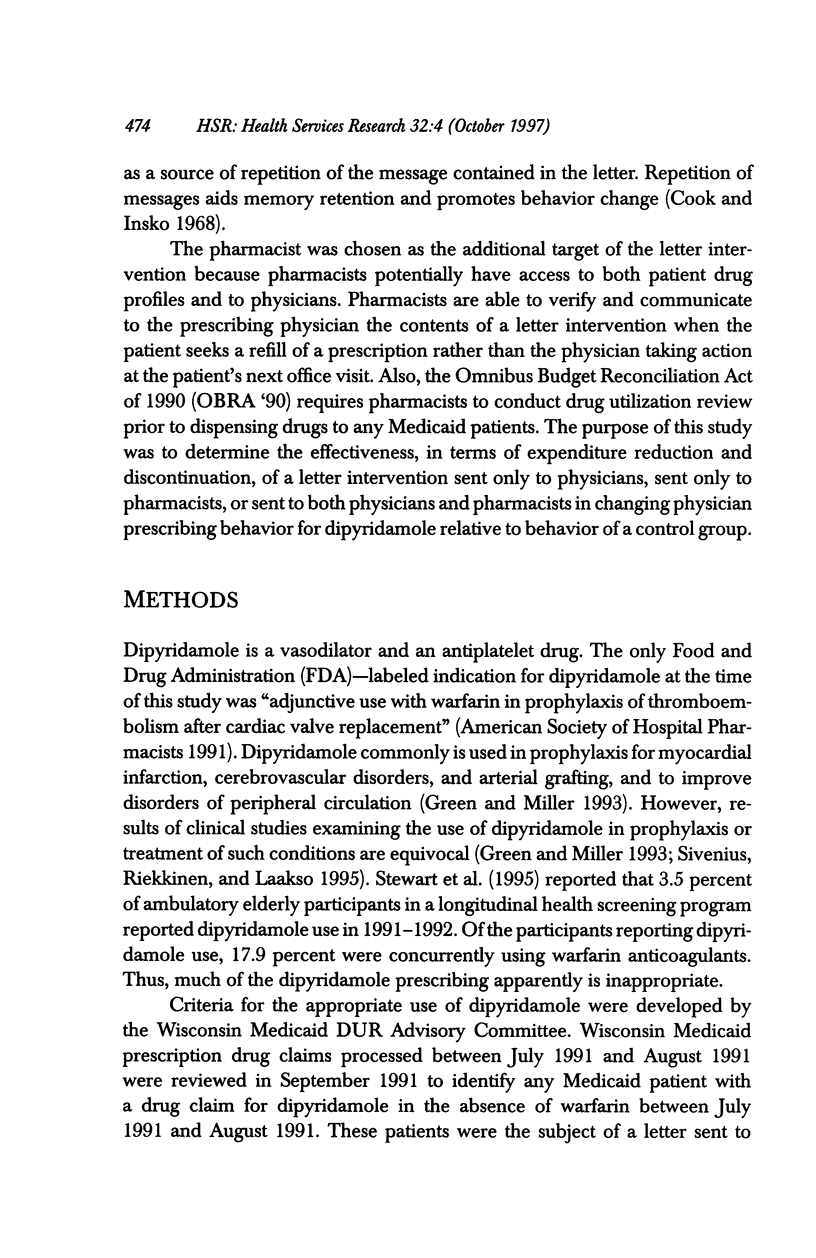
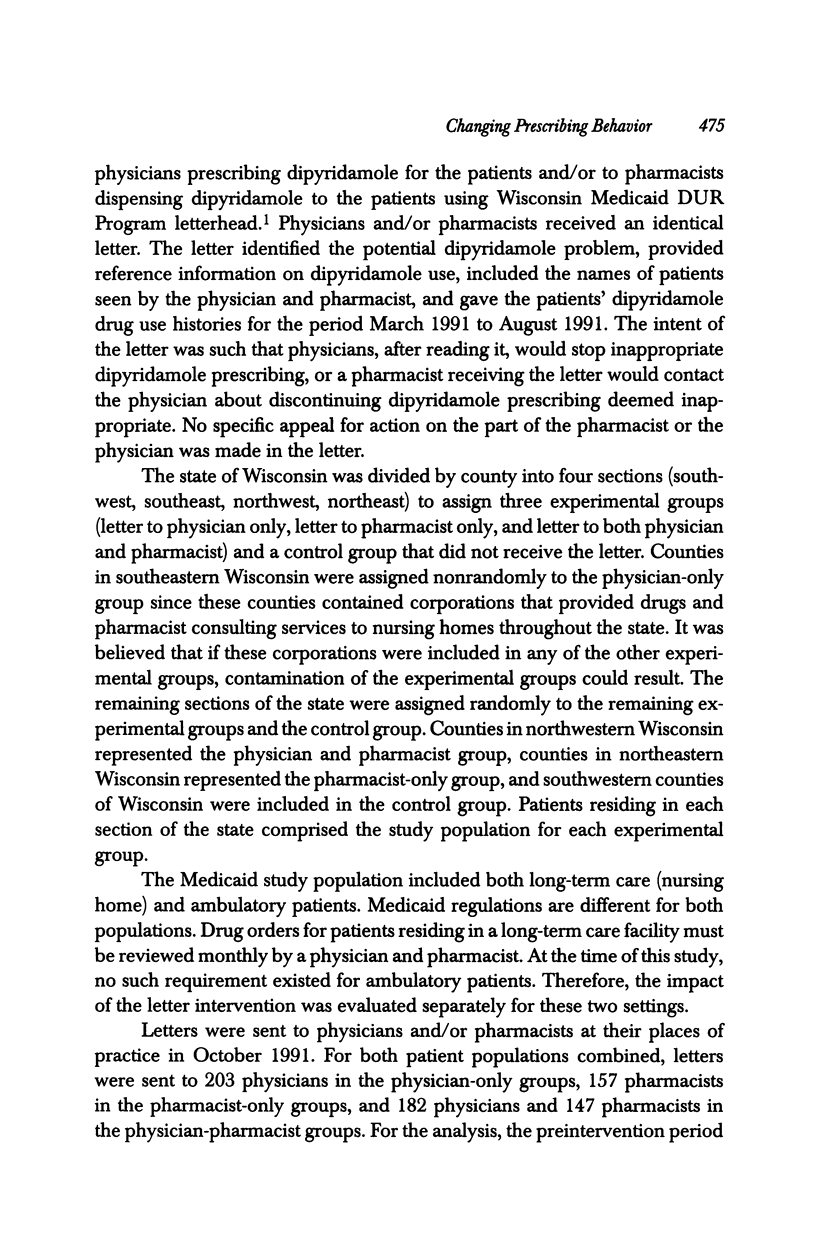

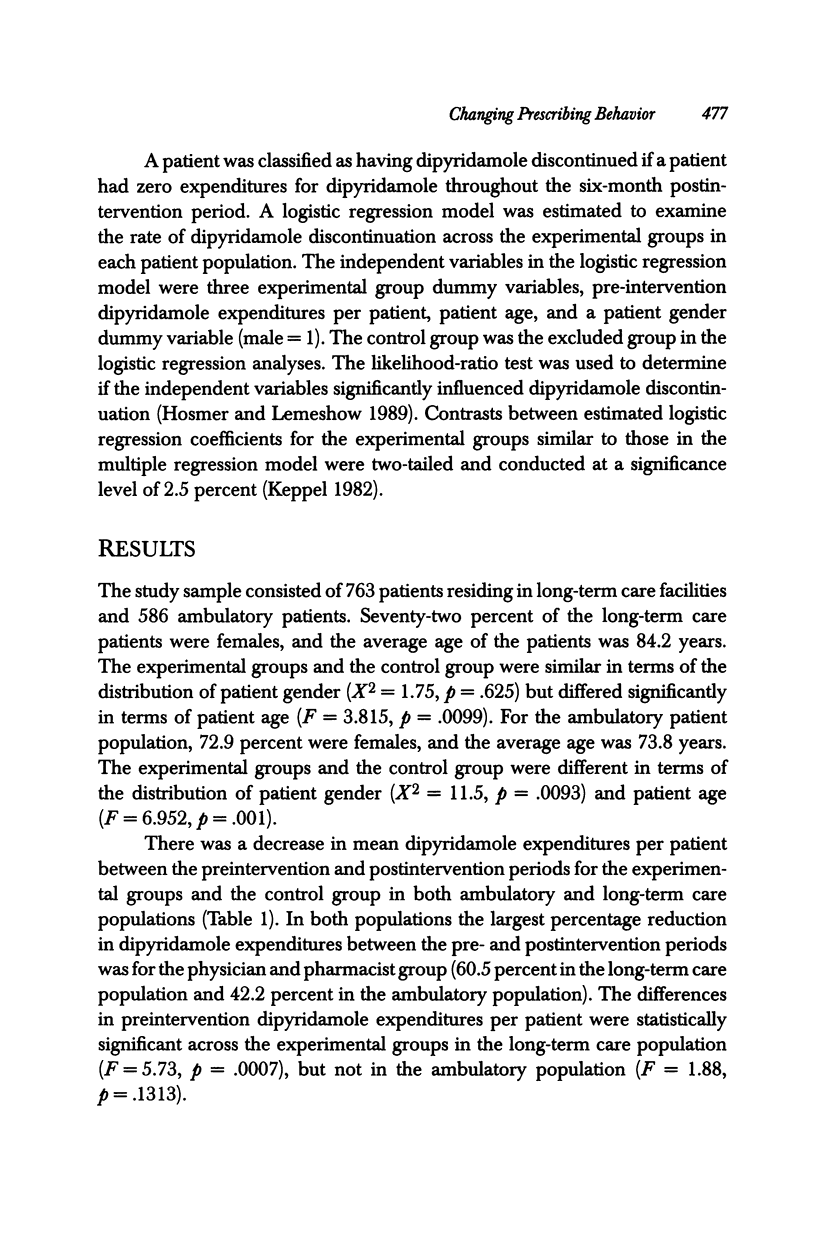
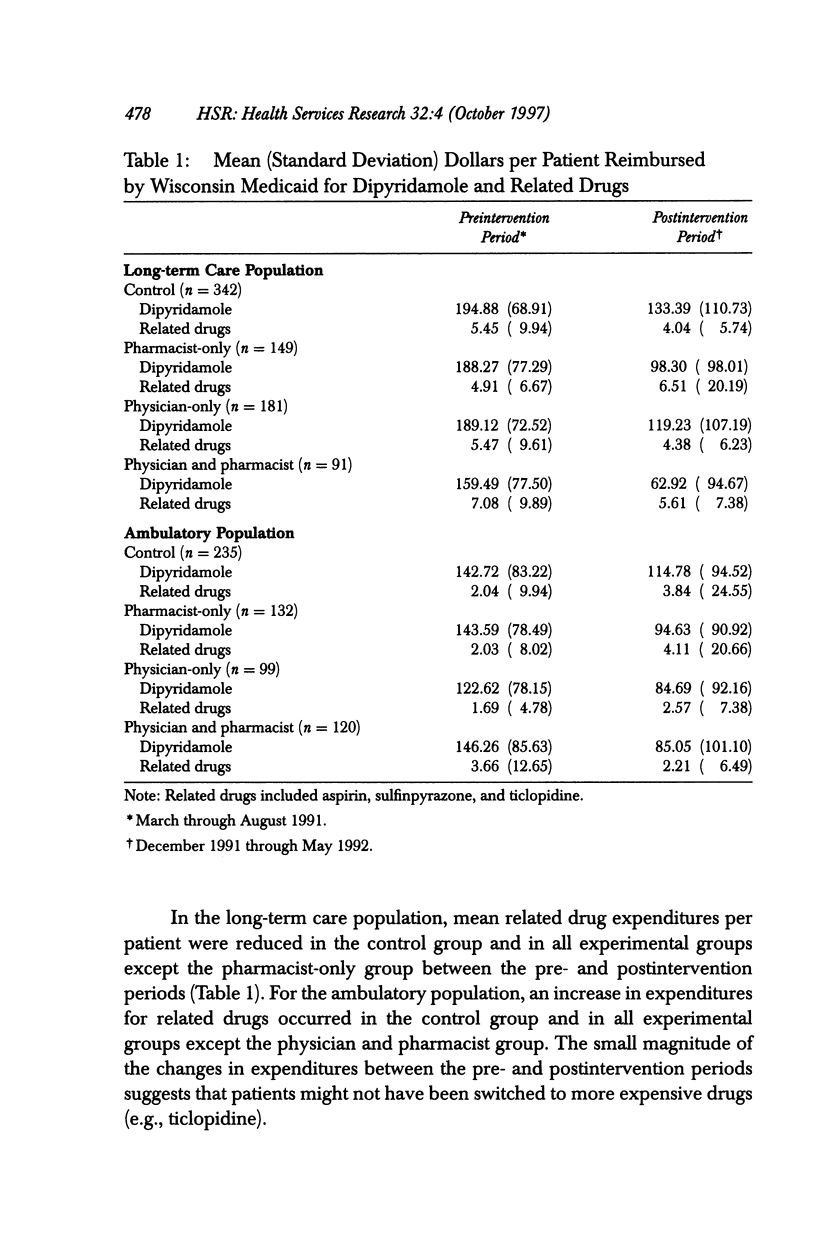
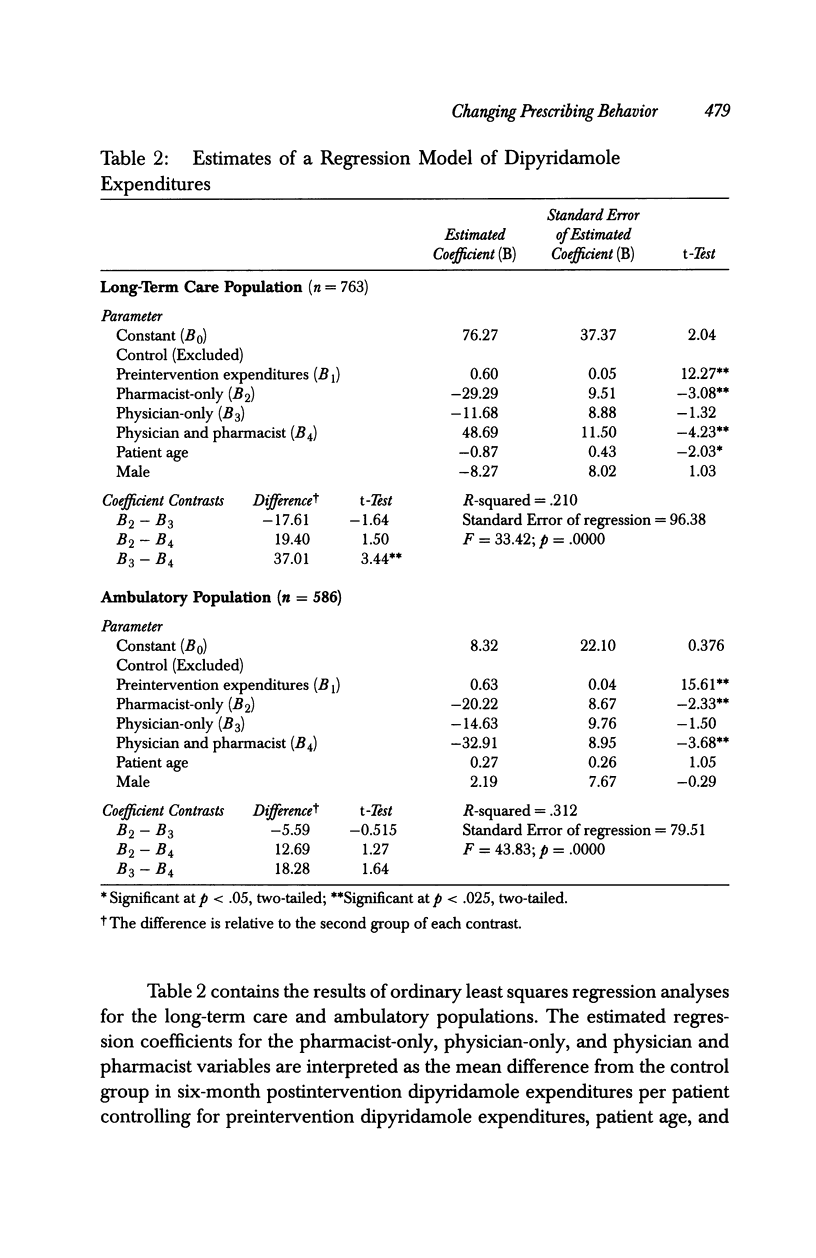
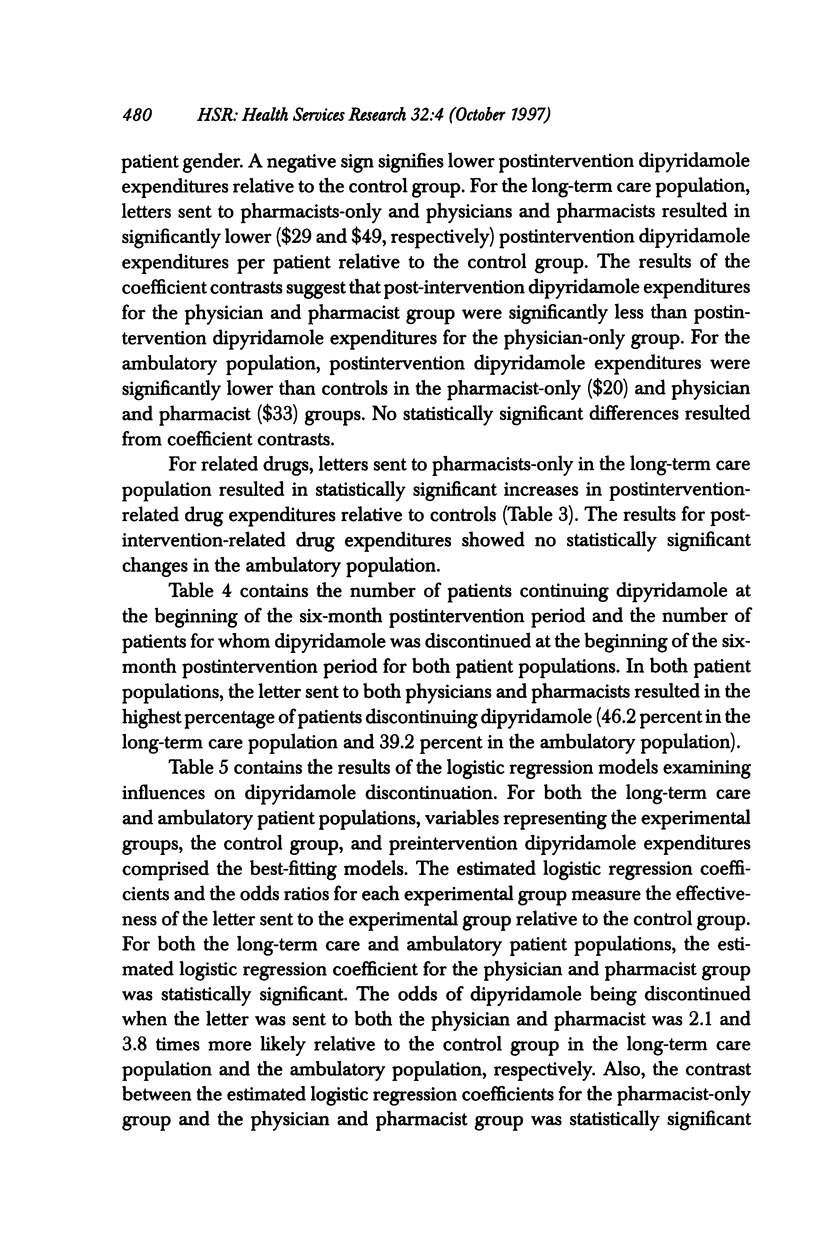
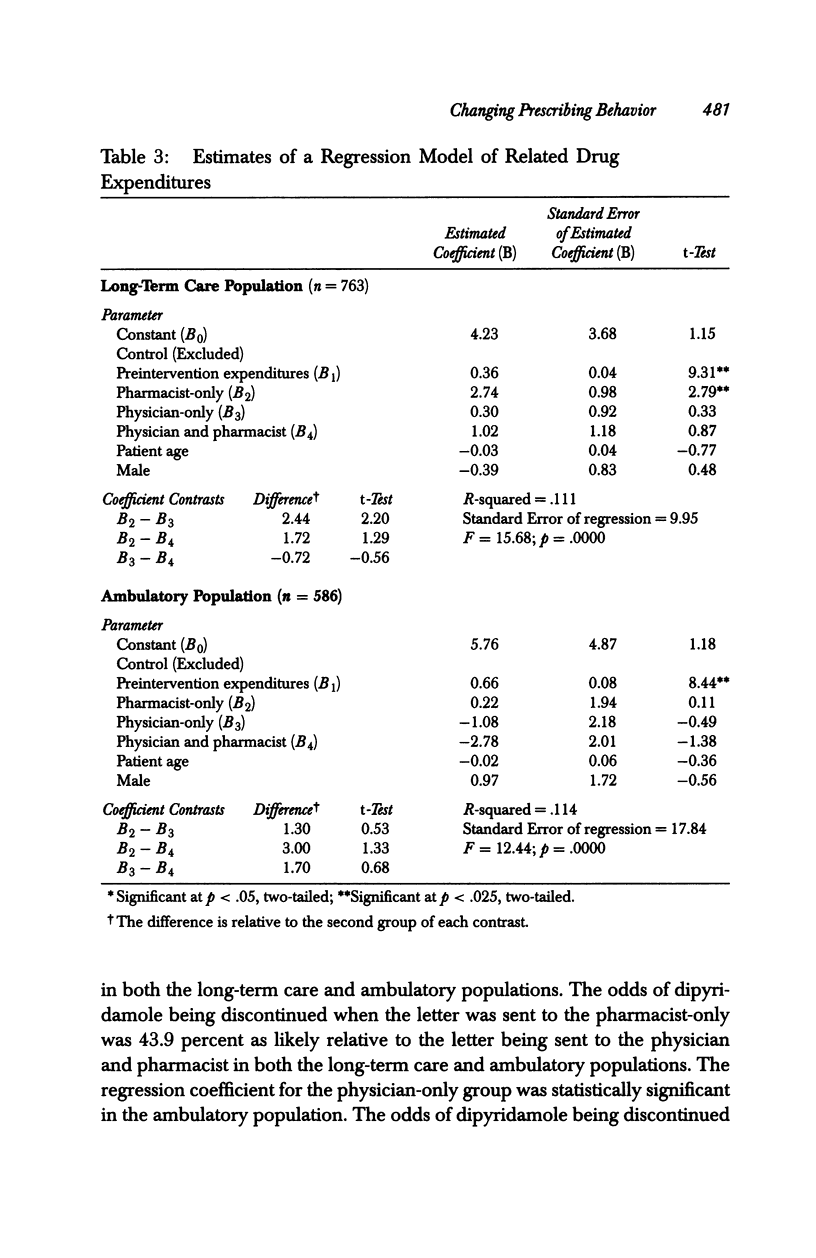
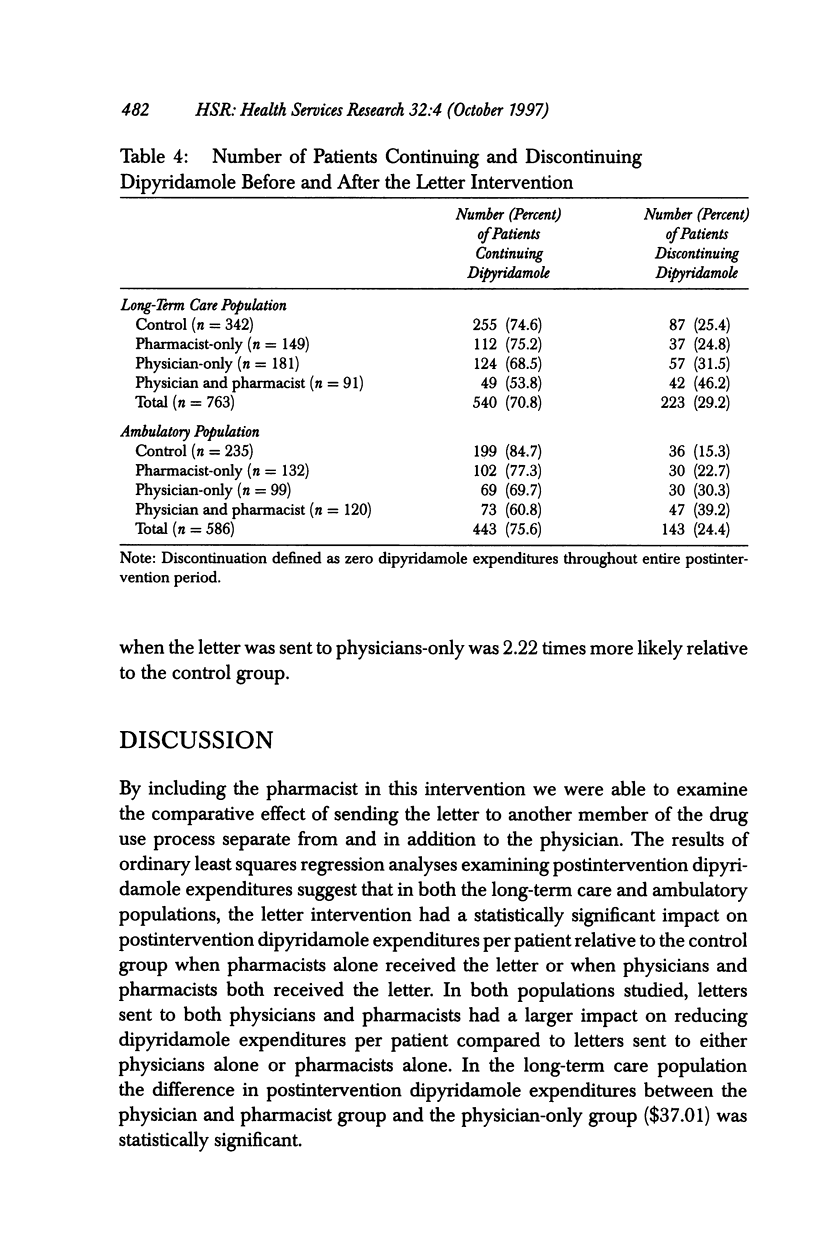
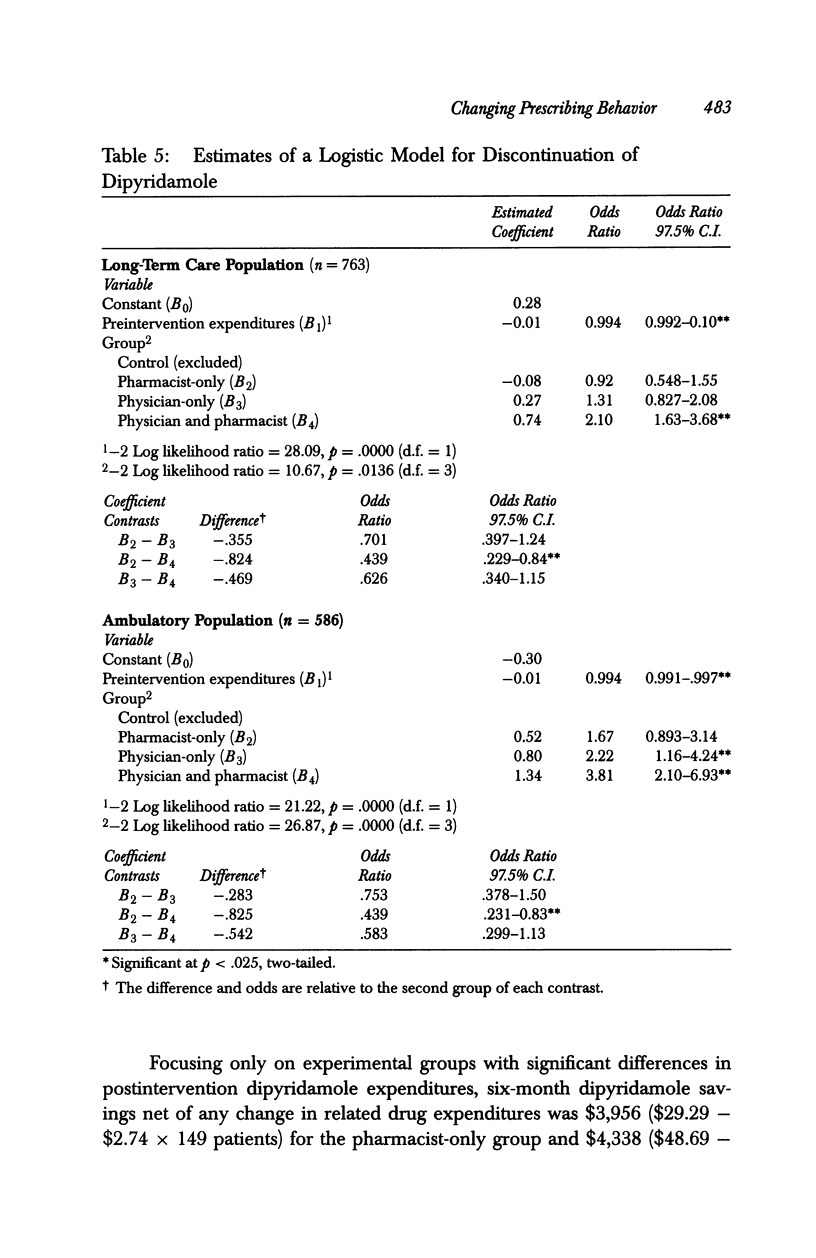
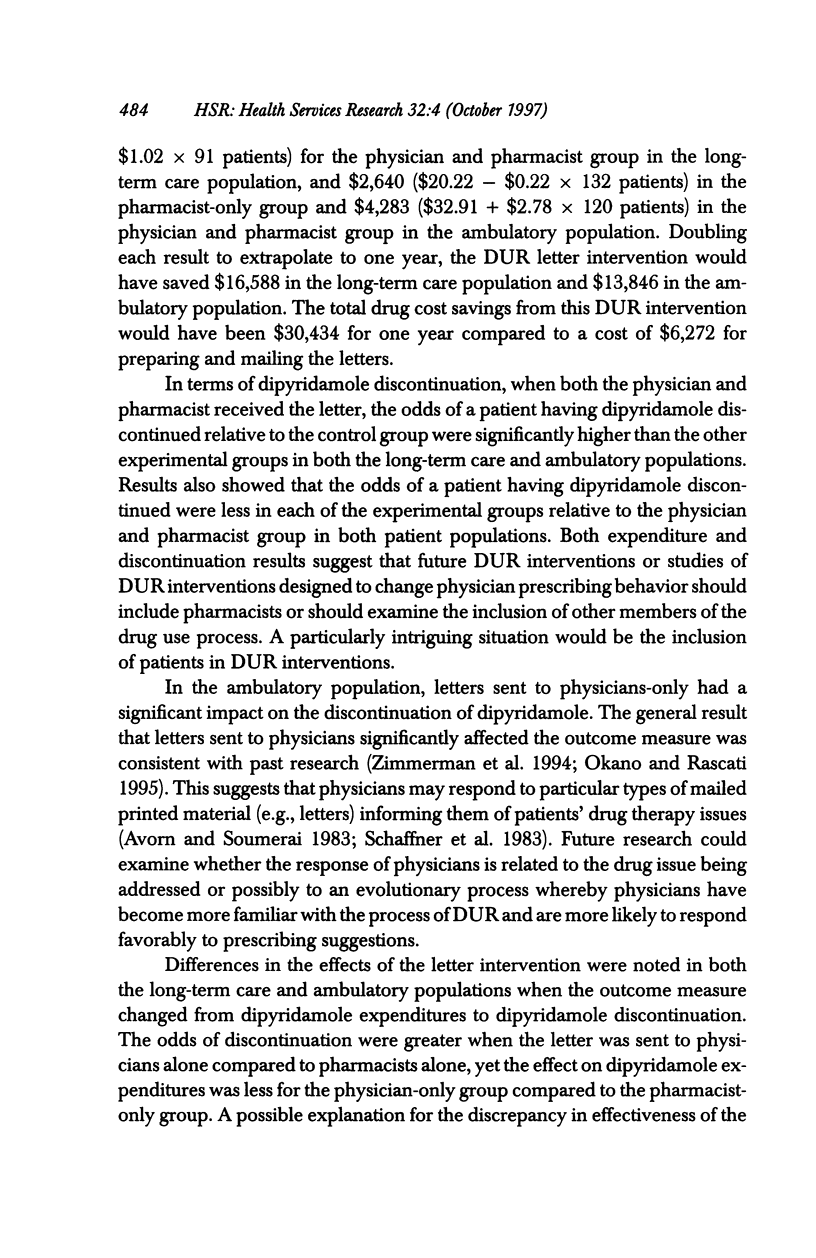
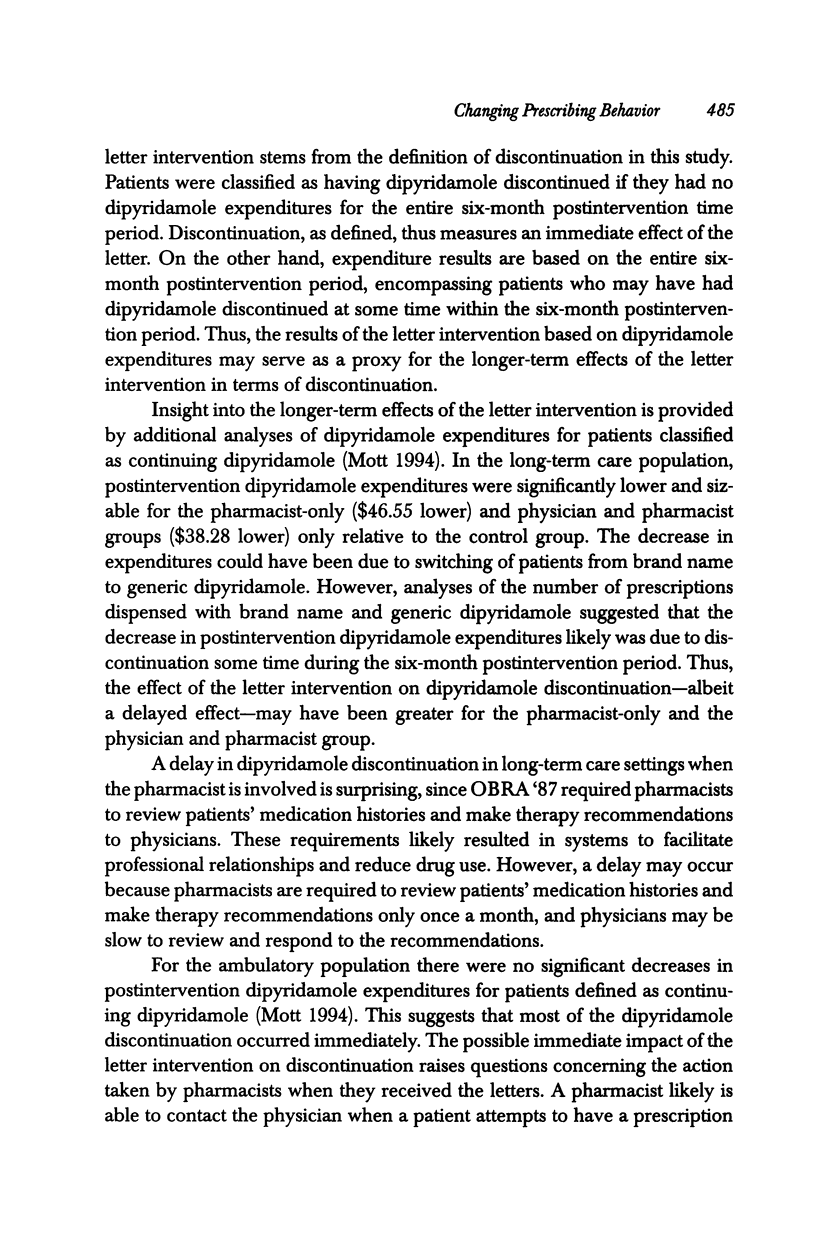
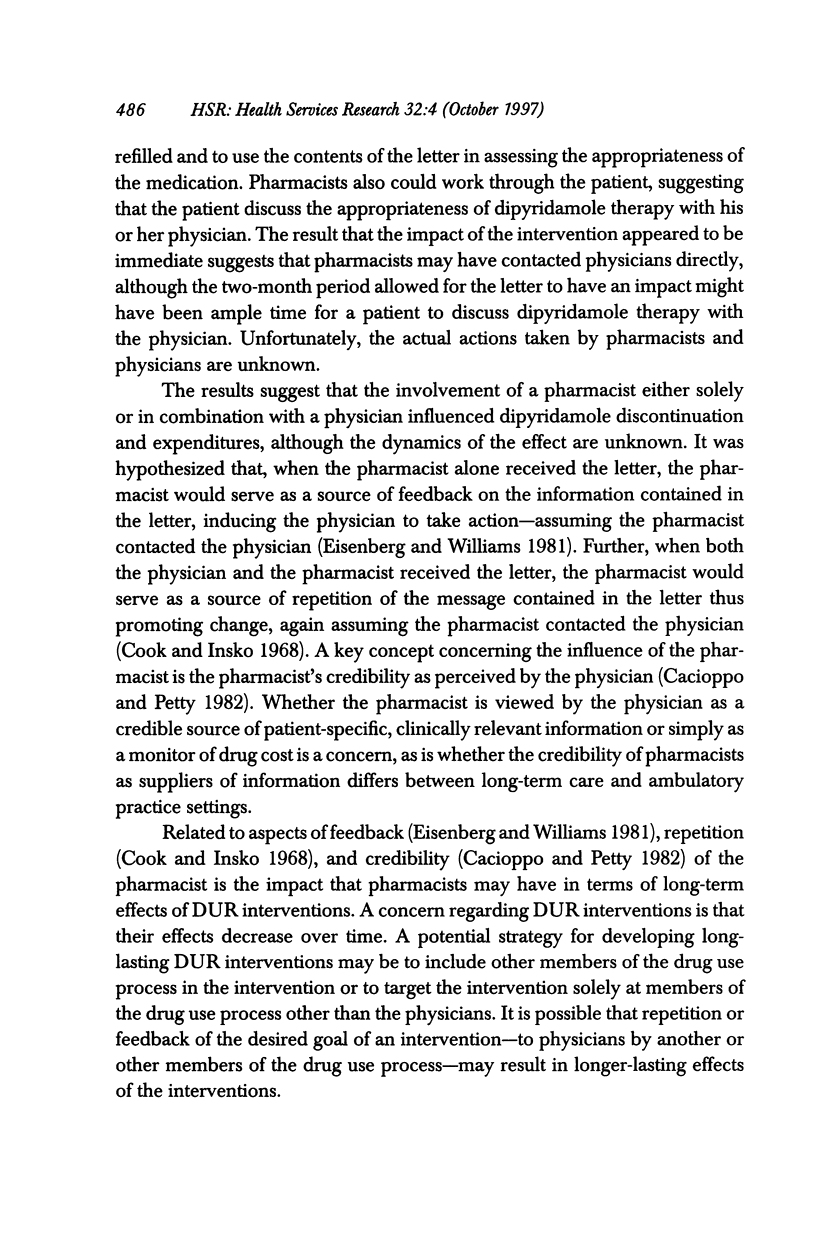
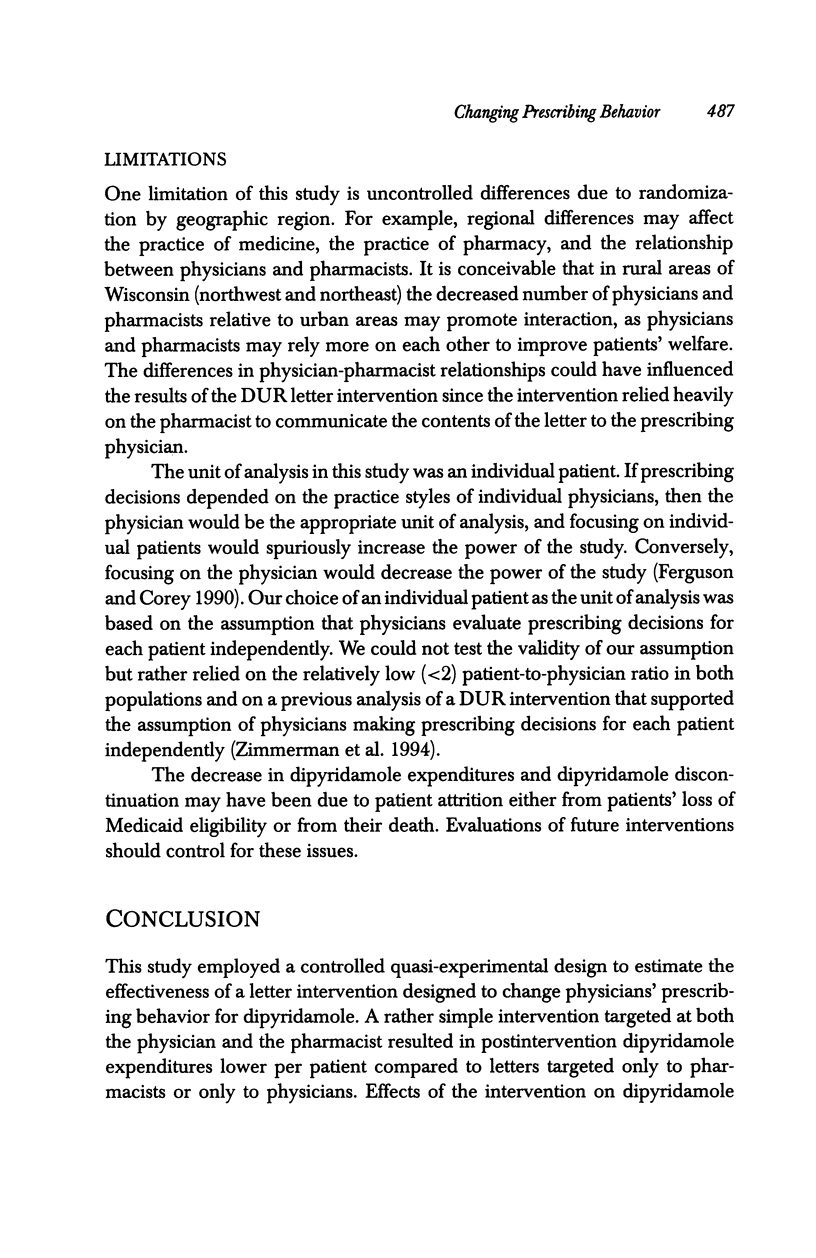

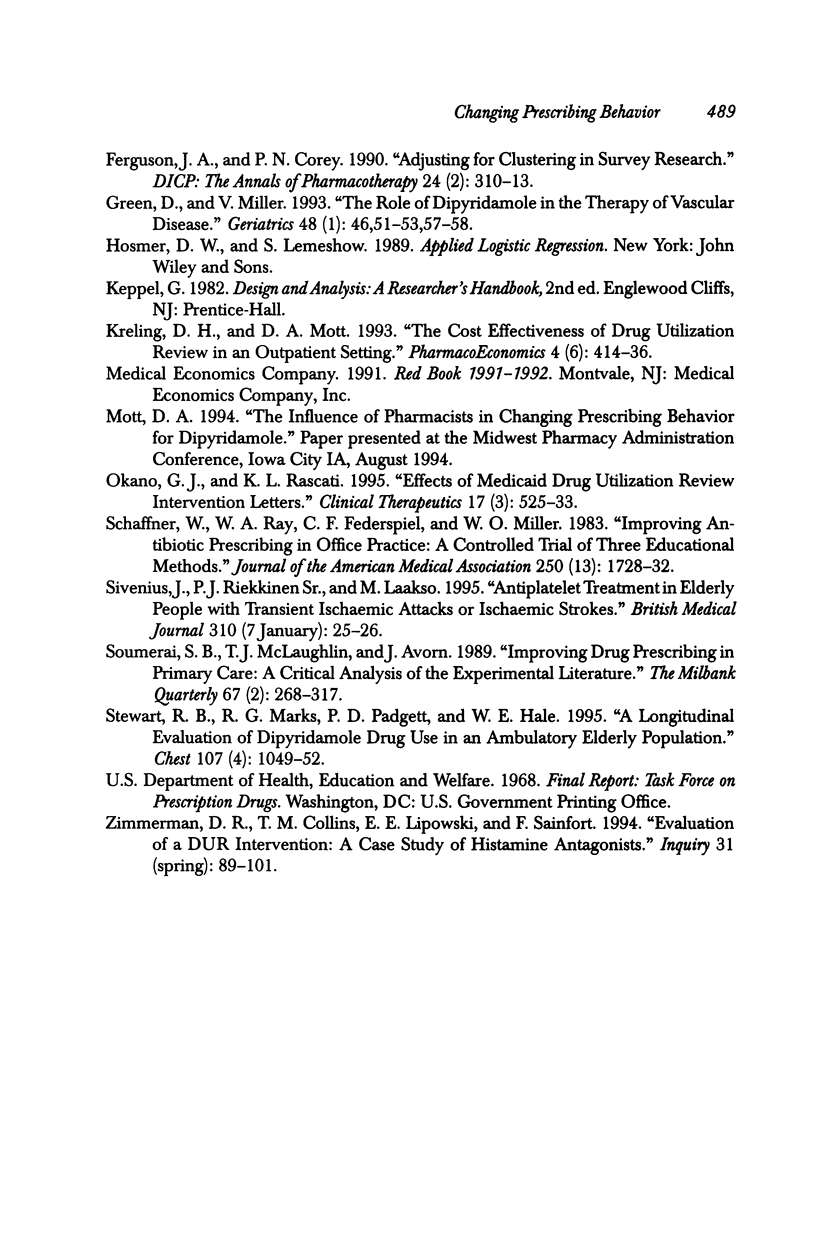
Selected References
These references are in PubMed. This may not be the complete list of references from this article.
- Avorn J., Soumerai S. B. Improving drug-therapy decisions through educational outreach. A randomized controlled trial of academically based "detailing". N Engl J Med. 1983 Jun 16;308(24):1457–1463. doi: 10.1056/NEJM198306163082406. [DOI] [PubMed] [Google Scholar]
- Cook T. D., Insko C. A. Persistance of attitude change as a function of conclusion reexposure: a laboratory-field experiment. J Pers Soc Psychol. 1968 Aug;9(4):322–328. doi: 10.1037/h0021254. [DOI] [PubMed] [Google Scholar]
- Eisenberg J. M., Williams S. V. Cost containment and changing physicians' practice behavior. Can the fox learn to guard the chicken coop? JAMA. 1981 Nov 13;246(19):2195–2201. [PubMed] [Google Scholar]
- Ferguson J. A., Corey P. N. Adjusting for clustering in survey research. DICP. 1990 Mar;24(3):310–313. doi: 10.1177/106002809002400319. [DOI] [PubMed] [Google Scholar]
- Green D., Miller V. The role of dipyridamole in the therapy of vascular disease. Geriatrics. 1993 Jan;48(1):46, 51-3, 57-8. [PubMed] [Google Scholar]
- Kreling D. H., Mott D. A. The cost effectiveness of drug utilisation review in an outpatient setting. Pharmacoeconomics. 1993 Dec;4(6):414–436. doi: 10.2165/00019053-199304060-00004. [DOI] [PubMed] [Google Scholar]
- Okano G. J., Rascati K. L. Effects of Medicaid drug utilization review intervention letters. Clin Ther. 1995 May-Jun;17(3):525–516. doi: 10.1016/0149-2918(95)80118-9. [DOI] [PubMed] [Google Scholar]
- Schaffner W., Ray W. A., Federspiel C. F., Miller W. O. Improving antibiotic prescribing in office practice. A controlled trial of three educational methods. JAMA. 1983 Oct 7;250(13):1728–1732. [PubMed] [Google Scholar]
- Sivenius J., Riekkinen P. J., Sr, Laakso M. Antiplatelet treatment in elderly people with transient ischaemic attacks or ischaemic strokes. BMJ. 1995 Jan 7;310(6971):25–26. doi: 10.1136/bmj.310.6971.25. [DOI] [PMC free article] [PubMed] [Google Scholar]
- Soumerai S. B., McLaughlin T. J., Avorn J. Improving drug prescribing in primary care: a critical analysis of the experimental literature. Milbank Q. 1989;67(2):268–317. [PubMed] [Google Scholar]
- Stewart R. B., Marks R. G., Padgett P. D., Hale W. E. A longitudinal evaluation of dipyridamole drug use in an ambulatory elderly population. Chest. 1995 Apr;107(4):1049–1052. doi: 10.1378/chest.107.4.1049. [DOI] [PubMed] [Google Scholar]
- Zimmerman D. R., Collins T. M., Lipowski E. E., Sainfort F. Evaluation of a DUR intervention: a case study of histamine antagonists. Inquiry. 1994 Spring;31(1):89–101. [PubMed] [Google Scholar]


